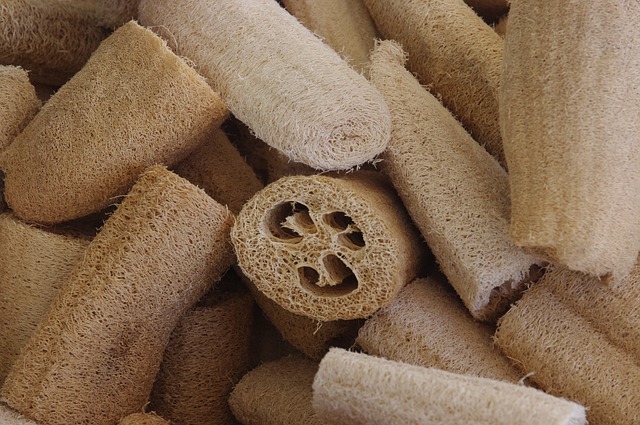How to Clean Ecologically
Many conventional cleaning agents contain environmentally harmful ingredients and are packaged in plastic. Cleaning with home remedies is more environmentally friendly, less harmful to health and requires less packaging. All you need are a few basic ingredients from which you can mix your own cleaning agent. This way, you not only avoid harmful chemicals, but also save plastic and money.
Which ingredients can you use to make your own cleaning products? What should you look for when buying products? What equipment is best to use?
Below you will find tips on how to keep your home clean without polluting the water with unnecessary chemicals, exposing yourself to harmful ingredients and producing unnecessary plastic waste.
1) Reusable Equipment
It makes sense to use few, but versatile and reusable cleaning utensils and it is best not to use disposable items such as paper kitchen rolls. Old sheets, dish towels and T-Shirts make excellent cleaning rags.
To bottle your cleaning products, you can simply reuse empty cleaning product bottles or purchase pretty containers that can be used many times.
2) Sustainable Materials instead of Microfiber
You should also pay attention to the materials. The problem: microfibers. Their production from petroleum requires a lot of energy. In addition, synthetic fibers do not degrade in nature. Tiny pieces of fiber can come off in the washing machine and during cleaning. This microplastic remains in circulation in our oceans, rivers and lakes for hundreds of years, can be swallowed by sea creatures and then ends up on our plates again as it passes the food chain.
Sustainable materials you can use include bamboo, loofah, sisal, copper, cotton and coconut fiber.

3) Bamboo Cloths instead of Disposable Kitchen Roll
The kitchen roll - standard in many households causes avoidable waste and can easily be replaced by a cleaning cloth made of bamboo, fabric or cotton.
To produce one ton of paper towels, trees are needed and more than of water are polluted. Globally, discarded paper towels cause tons of waste each year. Bamboo kitchen towels are an excellent environmentally friendly alternative since they can be washed and reused. They are suitable for any surface and can be used in many ways: cleaning windows without streaks, as dishcloths, for dusting, for cleaning surfaces and for drying dishes.
4) Loofah, Sisal and Copper instead of Plastic Sponges
Loofah is a dense-fibered squash plant and is therefore 100% compostable. You can often get loofah sponges unbleached and free of chemicals. The loofah plant fibers have enough scrubbing power to remove dirt, but won't scratch your dishes or other surfaces.
Sisal is also a suitable material for scouring pads. The fiber is extracted from the sisal agave and is compostable. It can be processed into rope, cordage, yarn and rugs.
Copper sponges clean particularly stubborn dirt in pots, pans, sinks, stoves, ceramic hobs, glass and stainless steel without scratching the material. They are also ideal for all shiny parts on bicycles and motorcycles, as well as for windows, chrome parts and aluminum rims on cars. The double-layered material can be washed in the washing machine at 60 degrees in a laundry net.
Copper is not biodegradable, but very durable and recyclable.
Tip: You can also crochet or knit yourself a rinsing sponge from parcel string or sew it yourself. Tawashi sponges can be upcycled from old socks.
5) Use Home Remedies
Vinegar, citric acid, orange, soda, baking soda, curd soap are the core elements for making sustainable, organic cleaning products. You should have these home remedies on hand.
6) Make your own All-Purpose Cleaner
This all-purpose cleaner is quick, easy and inexpensive to make. You can clean the bathroom and kitchen with it. For everyday dirt, it is quite sufficient.
Ingredients for about :
tsp. baking soda
teaspoon of grated curd soap, preferably free of palm oil
squeeze of lemon juice
cup of warm water
spray bottle (e.g. an old cleaner bottle)
Optional few drops of essential oil (eucalyptus, lavender or tea tree are ideal as they are antibacterial, antiviral and also antifungal)
Put curd soap and water in a small pot and heat it. Stir thoroughly with a whisk until the curd soap is dissolved, and let cool slightly. Add all other ingredients, stir and let cool completely. Pour the finished cleaner into a spray bottle.

7) Lemon and Vinegar eliminate Limescale
You don't have to buy a chemical limescale remover. Citric acid or vinegar help against limescale. However, vinegar should be used carefully on aluminum and silicone seams.
Ingredients for a citric cleaner:
warm water
citric acid
tsp. organic dishwashing liquid or liquid soap
drops of an essential oil (e.g. tea tree, lavender, orange or lemon)
Empty spray bottle from old cleaning agent.
Add water to the bottle. Add citric acid with a funnel, close bottle and shake until acid dissolves. Then add soap and essential oil.
8) Soda cleans tough Stains
Soda can replace aggressive conventional oven cleaners. Mix the powder with water and apply to stains in the oven, scrub off after a few hours and wipe.
In combination with vinegar, soda can also be used to unclog drains: put two tablespoons of soda directly down the drain, pour half a cup of vinegar in afterwards, let it soak in, rinse.
10) Baking Powder dissolves Grease
You can easily get greasy surfaces clean with baking powder or washing soda. Baking powder or washing soda can be used as a rinsing agent and removes e.g. tea stains. It also makes white laundry look bright. Simply mix one to two tablespoons with a liter of warm water. Avoid prolonged skin contact.
11) Look for Eco-Labels
When you're shopping for your cleaning product, look for the EcoCert and Ecogarantie eco-labels. They identify products that are free of problematic substances.
Sources:
https://utopia.de/ratgeber/oekologisch-putzen-mit-hausmitteln/
https://www.smarticular.net/rezepte-fuer-allzweck-reiniger-putzen-ohne-chemische-keule/
https://sauberkasten.com/2020/04/03/nachhaltige-putzutensilien/
https://sauberkasten.com/2020/04/03/umweltbewusst-reinigen/
German book by Louisa Dellert: Mein Herz schlägt grün, KomplettMedia, 1. Auflage 2018
Pictures:
Loofah sponges: Jan Helebrant, Pixabay